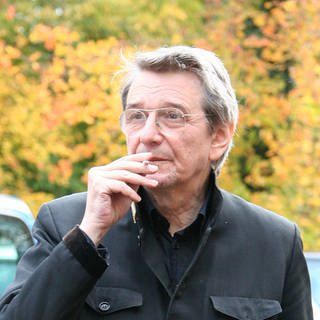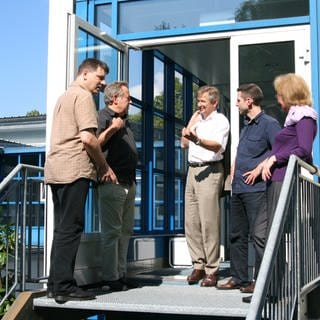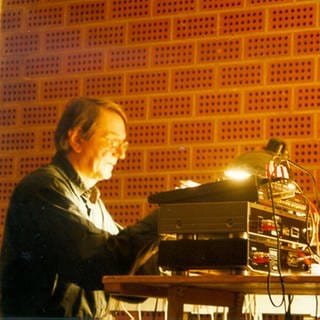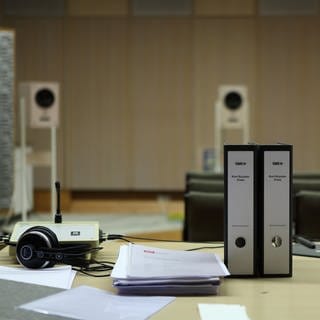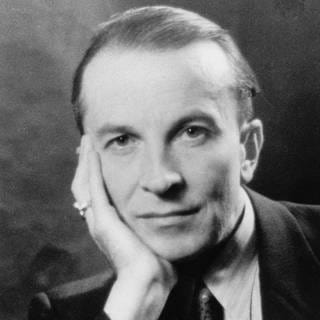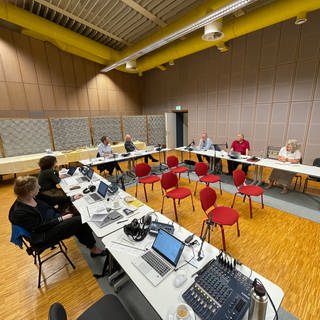Trois Dryades, Part 1
Trois Dryades, Part 2
Trois Dryades, Part 3
Asmus Tietchens on "Trois Dryades"
A tree trunk slowly split lengthwise served as the "instrument," with the inaudible noises generated inside the trunk forming the basic material for the three parts of the piece. Sensitive contact microphones made it possible to accurately capture the subtle crackling. This alone would have been no more than a minor auditory sensation and at best an interesting field recording among many. If it weren't for the complex frequency spectrum that enabled me to generate a multitude of compositionally relevant structures from the interior sounds of the tree trunk through extensive filtering and a series of other, by no means exotic technical measures. The three parts of TROIS DRYADES present completely different approaches to the material, which in its original form is only briefly heard in the third part. Therefore, do not expect acoustic-dendrological sonic events, but rather a noise and sound continuum arranged purely on aesthetic grounds with barely perceptible references to the original material.
Why a French title? Why Dryads? The latter were tree nymphs in Greek mythology who left their abode when the tree died. And the French title is a small homage to Pierre Schaeffer, the inventor of concrete music; but also to Claude Debussy, who not only advanced the idea of composition based on timbres but also, especially with "Trois Nocturnes," depicted a part of the ancient world impressionistically. From here through the Dryads to my tree trunk, it was not far. However, compositionally, there are worlds and a hundred years of time in between.
Composition and Realization: Asmus Tietchens
Editing: Markus Heuger
Production: WDR 2006
Premiere Broadcast: WDR March 25, 2006
The jury's reasoning
"In his radio piece 'Trois Dryades', Asmus Tietchens achieves an unusual interweaving of calm and tension. He develops a suggestive composition in three movements from very inconspicuous material - the microscopic internal noises produced when splitting a tree trunk. The interplay of vibrating sound surfaces and sharp-edged sound impulses, the oscillation between the concrete and the abstract, the alternation of contemplative expansiveness and physical pressure - a listening experience of particular charm and sophistication."
About the author
No university studies, no academic training, no scholarships but: learning by doing = autodidactic acquisition of creative skills and the use of analog and digital studio technology. I am my own sound engineer. Unfortunately, I can't put a date on my aesthetic CV. The developments were too gliding, even I can hardly comprehend progress and regression in retrospect.
Asmus Tietchens was born in Hamburg in 1947. In 1965, he began experimenting with tape recorders and electronic sound generators (such as sinus generators, rhythm machines) and concrete noise material. By 1971, he was working with the Minimoog, achieving more complex results through the use of eight-track tape recorders. In 1975, he made the decision to compose and realize electro-acoustic music "professionally." His first LP release, "Nachtstücke," came in 1980 in France, produced by Peter Baumann of Tangerine Dream. By 1982, he had stylistically turned to industrial music, releasing the LP "Formen letzter Hausmusik" in 1984 on the British label United Dairies. Until 1989, he released several LPs on international industrial music labels (such as Esplendor Geometrico, Hamster Records, Multimood, A-Mission, among others), including works with prepared piano, water sounds, and other concrete materials. In 1985, he experimented with the Fairlight CMI. In 1986, he embarked on his first trip to Brazil for lecture-concerts on behalf of the Goethe-Institut. Since 1989, he has had a teaching assignment for sound design, communication design, and sound research at the University of Applied Sciences Hamburg (HAW). In 1991, he made a second trip to Argentina, Chile, and Uruguay for lecture-concerts on behalf of the Goethe-Institut. Since 1991, he has had various CD releases on international labels (Staalplaat, Soleilmoon, Selektion, Mille Plateaux, among others). He has collaborated with various composers of so-called noise music (Merzbow, Achim Wollscheid, Thomas Köner, Vidna Obmana, among others). He won the Karl Sczuka Prize in 2003 for "Sechs Heidelberger Studien" and in 2006 for "Trois Dryades." To this day, he has released more than 50 LPs and CDs, and has given numerous public performances at home and abroad.
